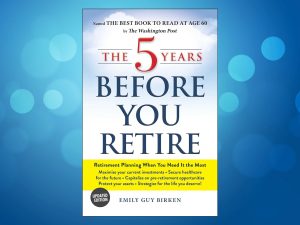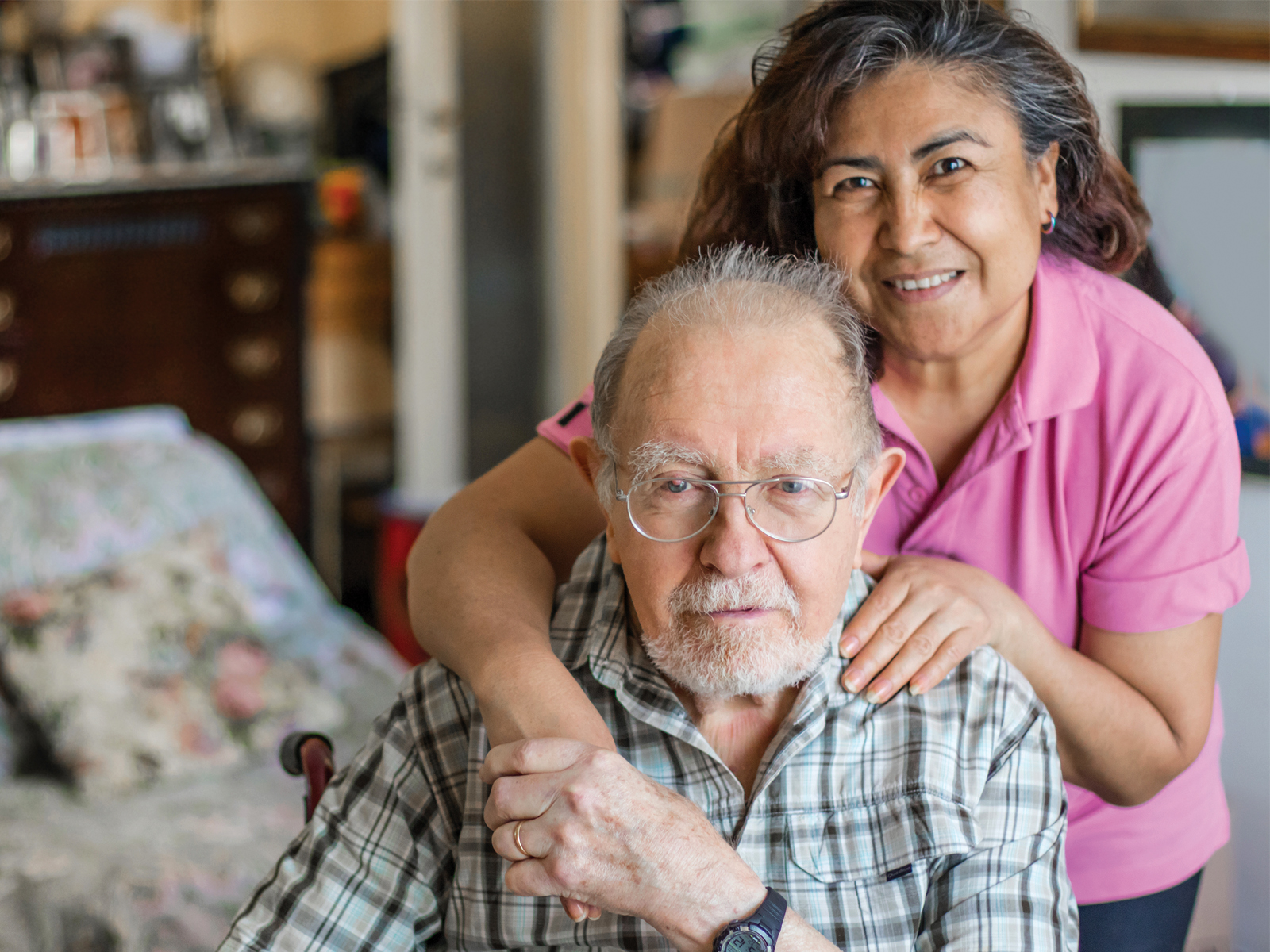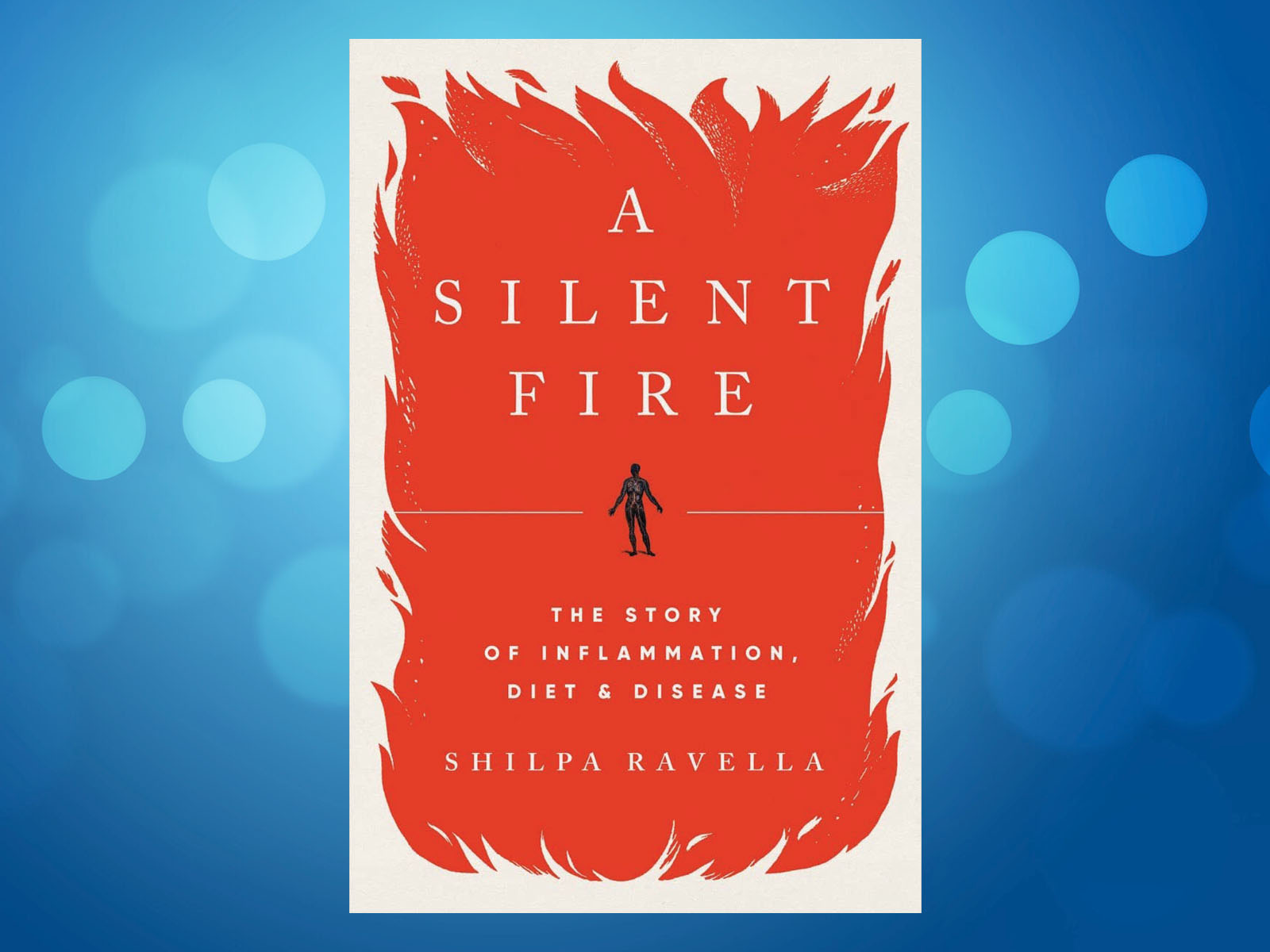Your dad has Alzheimer’s, and now lives in a long-term care home half an hour away from your office. Your mum who lives with you has a mild stroke six months ago and is now using a walker. You have wall to wall plush carpets, and your home is margining accessible. It’s time for some assistance at home but you are feeling guilty so you’re thinking of quitting your job, even though you are a single mother of two children. You are feeling tired and run down, you need help, where do you go from here?
By now, many of us have heard of or experienced the effects of caregiving on both our short and long term well being. Yes, caregiving is tiring, stressful and downright discouraging at times. I can be frustrating, illness provoking, stressful and tedious but there is light at the end of the tunnel for those who somehow manage to hold on to both their sense of self, their connections and of course, their health.
After chatting with hundreds of caregivers over the past few decades I discovered six key things that seemed to make a difference in both their lives and the lives of those they care for and about. They are attitude, energy, flexibility, gratitude and the ability to communicate.
1) Foster the right attitude
The old adage, the glass is either half full or half empty rings true as much in caregiving as it does anywhere else. The approach you take to everyday life as a caregiver or a patient affects both yourself and those around you. From where I sit, you have better relationships and reap more rewards, if you have a “positive attitude”
Life, however difficult, seems to be more pleasant when a person is able to maintain a can do approach to daily ups and downs. Hard as it is when you are more pleasant to be around things happen more harmoniously and dare I say in the medical world, sometimes faster.
Need an appointment for example… try turning on the charm, not the anger. Be kind, yet persistent. I recently needed a specialist appointment for a family member. I got to know the receptionist on the phone, dropped by to introduce myself.
Like all of us workers in the health system at all levels find it easier to support people who are pleasant and easier to work with – no-one one likes anger or raised voices or complaints. Please don’t read this as being passive or “waiting list” comfortable. Rather, keep the old proverb in mind, “you catch more flies with honey than vinegar”
2) Try to optimize your energy
Caregiving can be draining. In order to be effective you’ll need to keep an eye on your own health and well-being. Getting the right amount of sleep, maintaining a healthy diet and the right amount of exercise will help you to stay energized and give you the confidence and strength to maintain a more strenuous or stressful pace.
3) Discover support where you least expect it
Sometimes it’s hard to know what you need: Wise advise, a shoulder to cry on, time to rejuvenate, a dose of good fortune. At times assistance, family and friends have done all they can or are nowhere to be found. An act of kindness or an offer to help or a comforting word often comes from somewhere you least expected it to. Be honest, be open and most of all, don’t try to stoically go it alone.
4) Being flexible matters
You’ll likely need to step out of your comfort zone in more ways then one on this journey. Caregivers see things and have to face situations that they’ve never seen before. Old solutions may not work in the new situations you’ll come across. Be prepared to change your mind, change your plan and bring new people into your world. As a caregiver, you’ll need to think on your feet, think out of the box and juggle lots of things at once.
5) Communication reigns
Don’t be afraid to speak up. Always be polite and respectful but don’t hesititate to ask questions, point out things that concern you about your loved ones care or needs and be clear about what you are hoping to achieve. Many health professionals forget that we’re “new to the game” and new to many of the procedures that are quite routine for them. They’re also rushed at times, dealing with multiple emergencies, appointments and dilemmas and may not recognize the need for explanations or further clarity.
6) Patience wins
No point in getting your knickers in a twist. The system moves slowly. Waiting, re-organizing, confusion and caregiving seem to go hand in hand. If you’re use to the fast pace of the corporate world or a busy family schedule with young children, you might find yourself pacing the floor and becoming frustrated with delays.
Be prepared to use up a great deal of time arranging for or taking a loved one to appointments. You could end up missing lunch because you’re waiting for hours at hospital and doctors appointments. Then there’s the need to chasing for test results, diagnosis and treatment plans. And then you’ll have to re-organize someone’s home or daily life.
Manage Your Time
Just helping a family member with simple daily task such as bathing or dressing can take up to 9 hours per week. Add that to your other responsibilities and it’s clear that effective time management and evaluating your weekly priorities is essential. Since there are only 24 hours in everyday the only option is to change things. It’s perhaps easier said than done. But here are some suggestions that might open the door to doing things differently:
• Review your tasks and responsibilities.
• Prioritize the most important items
• Decide what you can and are prepared to do
• Make a plan on how to handle leftover tasks
• Work at becoming a better delegator
If you start to look at things in new ways and check for new resources with an open mind you’d be amazed on how quickly new doors can open and how much more energized you can become.
Chaos Can Get You Down
If you don’t plan and keep good records, you’ll soon find yourself feeling mixed up and disorganized. The best solution is to make notes of all discussions as they happen, keep track of care related expenses, set up a calendar to record the dates of medical appointments. Also, experts recommend building an eldercare telephone and email directory of all the contacts you are going to need so you can find things easily and be ready to transfer the necessary information to the people who can help you out.
Organizing the team
It’s an age-old dilemma. Everyone offers to help, but no one really knows what to do. You don’t need their visits or chili casseroles quite as much as they think, and their well intention phone calls often upsets you or cause more disruptions than they are worth.
What I did: I created a list of things that others can help me with, and just like participants in the church supper who signs up to bring something, my friends and family were invited to choose a task that they were comfortable with and agreed on a timeline.
| Tasks | Timing | I’ll Do That |
| Take out the garbage | Wednesday morning before 8am | Rod (Next door neighbour) |
| Put away groceries when delivered and do laundry | Saturday morning after 10am | Jane (Sister) who visits every Saturday |
| Organize and clean | Once a week | Bill (Brother who lives in Vancouver) found and paid for a cleaning service. |
| Take mum to the doctors | As needed (Approximately twice a month) | Martha & Jen (Friends) agreed to drive or take Uber. And set up a calendar invite that we could all share. |
Taking time for yourself
These are things you should try to do for yourself to stay healthy and well:
Stay fit: Try to exercise or work out at least twice a week. Ideally with a specific personalized program, a favourite cardio video, or yoga session in the community.
Book an appointment with yourself: Put your personalized time in your daily diary or calendar, and treat your commitment to yourself like a business meeting, in other words not to be missed. Have fun planning for what you want to do in that time, so that you can look forward to it.
Best foot forward: Take a walk at the same time each day. Perhaps before breakfast or at lunch time. If you feel guilty, take along the kids or use your dog walking time as time for you.
On the job: Learn to do some simple stretches at work that can be done in 5 minutes, twice in the morning, and twice in afternoon.
Take a break: Make it your goal to turn off your mind for a set period of time and activate your body to give a physical outlet to the mental stress.” His list of activities to try sounds like fun and welcome respite.
• Golf: Helps you focus on all parts of your body and get you outdoors. Tennis, squash or badminton: Each sport calls for focus, coordination, speed and reflexes.
• Drawing or painting: Excellent ways to practice concentration and focus and test your perceptual skills.
• Reading: Allow yourself to delve deeply into a good story and turn off all other intrusions.
• Gardening: Simple, yet satisfying work with tangible results
• Woodworking: Exacting and difficult tasks exercise concentration and produce visible results
• Plays, concerts, ballet: a change of pace and sheer entertainment will offer temporary and welcome mental relief.
Caregiver Support Groups
Support groups exists across Canada and provide family carers with a sense of community and the feeling that they are not alone. Talking to others often helps us to deal with potential negative emotions: from guilt to fear, isolation to frustration, from happiness to sadness.
Members of a support group, often have no preconceived notions of who the others in the group are, or what kind of care they are giving, they just know they are in the same boat as caregivers. A support group is often a safe haven where the goal is to create a feeling of openness and a lifeline to others willing to offer support in difficult times. Here’s how you can benefit from a support group
• Feel less isolated, and knowing others share similar problem
• Get ideas and effective ways to cop
• Find information about community resources, care alternatives, make networking connections
• Have an opportunity to share humorous stories with people who don’t judge you
• Respite from caregiving tasks
• Stress relieves
• Validation for your role and identity
• Comfort during the grieving process.
Online Support
You don’t have to be alone on this journey. Thousands of Canadians are family caregivers and many have the same concerns and questions that you do.
Web Based Support Groups
These groups are ideal for caregivers who are unable to attend a support group in person or haven’t been able to find one in their local area. Here is an example of an online caregiver support group for family members caring for someone with dementia that is run by Baycrest that you could join.
Baycrest’s web-based group is facilitated by a social worker. It allows family members affected by a person who has dementia to meet each other online. Baycrest and the Ontario Telemedicine Network (OTN) have created a secure, user-friendly video conferencing software that enables group members to exchange ideas, offer encouragement, solve problems and receive therapeutic support from a trained social worker. Each group includes 6-8 people who meet with the social work facilitator once a week for 8-10 weeks.
The evidence-based support group intervention was developed by Dr. Elsa Marziali at the Rotman Research Institute at Baycrest and is available as a clinical service, thanks to a gift by the Robin and Barry Picov Family Foundation. An important part of this project is a program evaluation to ensure that these groups are as helpful as possible and can be tailored to the individual needs of participants.
Eligibility criteria:
• Adult child, partner or family member of someone with dementia who resides at home or in the community
• Ontario resident
• Access to a computer, tablet or cell phone with video and high-speed internet
• Able to commit to all sessions
Learn More
If you wish to learn more, you will be contacted by a Baycrest social worker who will ask you questions to better understand your relationship to the person with dementia, their age and the form of dementia they have in order to enrol you in the appropriate group. Fill in the request form here: https://www.baycrest.org/Baycrest/Healthcare-Programs-Services/Programs/Online-Caregiver-Support-Group
Another helpful resource for caregivers is Dementia: A Caregiver’s Guide. The guide, written by Baycrest experts, provides caregivers with practical tips and coping strategies in such areas as: activities of daily living, communication, sex and intimacy, managing challenging behaviours, driving, falls prevention and home safety.
Fighting Fatigue
Conserving your precious energy can be a challenge in our busy world where we try to do too many things at once. When you are called upon to go to extra appointments, lug around medical equipment, and help with mobility and personal care activities, caregiving can be physically draining. While there is no quick fix, its wise to eat well and practice whats called “energy management” here are some recommendation from occupational therapist for those with busy schedules. These practices will help reduce stress levels and preserve valuable energy for you and other members of your family who might want to learn about them as well:
• Reduce fatigue by sitting: Energy consumption is reduced by 25% when you are not standing. Taking regular breaks, and sitting down from 5 to 10 minutes at a time will increase your overall energy. Poor poster can also drain energy. For instance, carry two small bags of groceries – one in each hand, rather than one large heavy bag.
• Manage your time by dividing tiring activities: Instead of doing all the big things at once on one day, try spreading them out throughout the week. And pace yourselves. Alternative light and heavy tasks, and rest when tired.
• Keep your home organized: Unnecessary clutter can tire you out mentally and physically. For example, think of the time and energy you waste searching for your car keys, or trying to find a pair of glasses. Create a comfortable environment because a pleasant, relaxed atmosphere will do wonders for your energy levels and rejuvenation. Make sure your surroundings are well lit with subtle colours.
• Plan outings: It’s not the event but your perception of it that makes all the difference. Stay calm, make a list, and schedule your errands in a logical manner. Follow a route that eliminates extra travel, traffic, and extra trips. Travel sensibly. When you pack, do so in the same order each time. You might start with items you need in the morning, then clothes, then accessories.
Sleep Glorious Sleep
Work, kids, parents, social life – it can all add up to a hectic juggling act, and sleep usually becomes a low priority. Study shows that 25% of us suffer from sleep disorders while an astounding 50% experience sleeping problems at some point in our lives this adds up to millions of us who are believed to suffer from chronic sleep disorders, with many more of us being affected on an occasional basis.
There are over 70 different types of sleep disorders, but the most common sleep disorders are insomnia, sleep apnea, restless legs syndrome, and narcolepsy. And there’s the struggle that many of us have with feeling perpetually tired. While experts suggest that individuals vary greatly in their need for sleep; there are no firm ways to measure or official criteria to determine exactly how much sleep a person needs. Eight hours or more may be necessary for some people, while others may consider this to be too much sleep.
General consensus is that average adult or caregiver needs about 7 to 9 hours of sleep each night. However, it’s important to realize that many of us experience changes in our sleep with aging. Data shows that deep or slow wave sleep (Stage N3) sleep declines as we age, while light sleep (Stage N1) increases
Simply put…older adults may be more easily aroused as they spend less time in the more restorative stages of sleep and more time in lighter sleep. Older people are also more easily aroused from sleep. However, there is no scientific evidence that you need less sleep as you get older.
Non-medical treatment options are often referred to as sleep hygiene. Sleep hygiene is the practice of behavioural habits that offer the maximum potential for restorative and sound sleep. Experts suggest that we skip activities and just un-wind a couple of hours in time for bed. That means, no exercise, no eating or drink especially spicy foods or large meals, and:
• Avoid caffeine, nicotine, and alcohol use before bedtime. Some studies have shown that caffeine consumed early in the day can have an effect on the ability to fall asleep at night.
• Have and adhere to a regular bedtime and waking schedule. Go to bed and get up at the same time each day.
• Create a comfortable sleeping environment with a comfortable mattress and pillow. Keep your bedroom dark, quiet, tidy and not too hot.
• Get outside in the light
• Avoid napping in the afternoon
• If you’re watching television or using electronics with backlit screens in bed or having the television on while falling asleep it will make sleeping more difficult
• Many people report that they lie awake at night worrying about problems or situations they will face during the coming day. In this case, it can be helpful to write a to-do list or a list of items to act upon the following day prior to bedtime, giving yourself permission to “let go” of these items during the night.
If you think your medications might be keeping you awake, be sure to talk to your doctor and know that even moderate exercise, like brisk walking, can do a caregiver good. Stanford University researchers followed 100 female caregivers who participated in either an exercise program or a nutrition program. The exercise group performed moderate physical activity (brisk walking, stationary cycling, working out to fitness videos, etc.) for at least 30 minutes, four times a week. At the end of the study, the exercise group had less stress and better sleep quality compared to the nutrition group. Blood pressure levels also improved in he exercises group.
How do you know if you need more sleep?
One sign of not having enough sleep is feeling tired or drowsy at any time during the day, another is being able to fall asleep within 5 minutes of lying down in the evening also may be a sign. People who suffer from sleep deprivation may also experience so-called “microsleeps,” which are short bursts of sleep in an otherwise awake person. When someone is sleep-deprived the are known to be:
• Always hungry
• More impulsive
• Slower to remember
• Having trouble making decisions
Understanding Your Sleep Problems
Sleep problems occur in a number of different medical and psychiatric conditions. For example, asthma attacks and stroke are conditions that tend to occur frequently during the night or early morning hours. The relationship between sleep stages and certain types of epileptic seizures is complex and not completely understood, but certain sleep stages tend to either exacerbate or prevent the spread of seizure activity in the brain.
Sleep problems occur with chronic pain and conditions in which pain is worse at night, because the pain may interfere with sleep. Pain medications and other types of medications taken on a regular basis for chronic conditions can also have an effect on an individual’s sleep pattern. Those suffering from cancer, Alzheimer’s disease, and brain injury are also commonly affected by sleep disturbances.
Psychiatric diseases such as depression are also associated with sleep problems. This condition can be associated with both too much sleep and too little sleep. In fact, sleep problems are associated with a majority of mental disorders, and poor quality or insufficient sleep can worsen
If you are concerned about the quality of your sleep or if you have the symptoms of a sleep disorder, it is important to consult your health care practitioner. He or she can help you determine the cause of your sleep problem and recommend appropriate therapy.
Common Sleep Disorders
Insomnia is the perception of poor-quality sleep, including the inability to fall asleep or stay asleep. Because people differ in their need for sleep, there are no fixed criteria that define insomnia. Insomnia is very common and occurs in 30% of the general population. Approximately 10% of the population may suffer from chronic (long-standing) insomnia. Sleep onset insomnia is characterized as occurring at the beginning of the desired sleep time and lasting for greater than 30 minutes. Sleep maintenance insomnia is when individuals fall asleep, but awaken periodically or for lengthy periods during the night, increasing the wake-after-sleep-onset (WASO).
Sleep apnea is another common sleep disorder characterized by a reduction or pause of breathing (airflow) during sleep. Central sleep apnea (CSA) occurs when the brain does not send the signal to the muscles to take a breath, and there is no muscular effort to take a breath. Obstructive sleep apnea (OSA) occurs when the brain sends the signal to the muscles and the muscles make an effort to take a breath, but they are unsuccessful because the airway becomes obstructed and prevents an adequate flow of air. Mixed sleep apnea occurs when there is both central sleep apnea and obstructive sleep apnea.
Restless leg syndrome (RLS), also known as nocturnal myoclonus, is a type of sleep disorder characterized by uncomfortable sensations in the legs and an uncontrollable desire to move the legs. These abnormal sensations usually occur in the lower legs during the evening. Periodic leg movements (PLMs) are related to RLS, but occur after the onset of sleep and are labeled as a sleep disorder or syndrome when the movements cause increased activity in the brain. During the early stages of sleep, these episodes of leg movement often last up to an hour. The abnormal sensations of RLS are quite variable. They have been described as a crawling, creeping, pulling, drawing, tingling, pins and needles, or prickly discomfort. They are not cramping in character. Patients with RLS may have difficulty falling asleep because of the difficulty getting comfortable and an increased urge to move their legs. Many patients with RLS will have PLMs and vice versa, but they are not the same disorder.
Narcolepsy is a disease of the central nervous system that results uniformly in excessive daytime sleepiness (EDS). Other primary symptoms of narcolepsy include the loss of muscle tone (cataplexy), distorted perceptions (hypnagogic hallucinations), and the inability to move or talk (sleep paralysis). Additional symptoms can include disturbed nocturnal sleep and automatic behaviours (affected persons carry out certain actions without conscious awareness). All of the symptoms of narcolepsy may be present in various combinations and degrees of severity.
Evaluate Your Sleep
Doctors use a number of different tests to evaluate sleep and determine whether a sleep disorder is present. A careful medical history and physical examination are performed to help identify any medical conditions that may be interfering with the person’s sleep.
A health care practitioner will also ask about the use of prescription and non-prescription medications as well as alcohol, tobacco, and caffeine use. Laboratory tests may also be used to help diagnose any medical conditions that may cause sleep problems.
In some cases, specialized testing is recommended to help determine whether or not a person may be suffering from a sleep disorder.
Treatments and Therapies
Of course, many people with sleep disorders will require treatment beyond sleep hygiene measures. Behavioural therapies are successful for many people who suffer from insomnia. These therapies may consist of stimulus control measures, such as using the bed for sleeping and sex only and not for other activities such as reading or TV watching. Sleep restriction therapies are often used to help individuals avoid staying in bed too long and actually over-sleeping after a night of insomnia.
- A number of prescription drugs have been used to treat sleep disorders and there are many holistic and OTC sleep medications are sometimes used for the short-term treatment of insomnia
- Melatonin, a chemical released from the brain which induces sleep, has been tried in supplement form and promoted as a natural sleep remedy for treatment of insomnia. But studies have shown that it has been generally ineffective in treating common types of insomnia, except in specific situations in patients with known low levels of melatonin.
- CPAP devices (continuous positive airway pressure; a device worn over the face that holds the airway open by maintaining constant air pressure) or AutoPAP (PAP delivered over a range of pressures) and dental appliances have been effective in the management of sleep-related breathing disorders, including sleep apnea. CPAP is typically the first line of therapy for most adult patients with obstructive sleep apnea. Surgery can be effective for some patients and may help patients respond to CPAP. Newer, implantable devices that stimulate the muscles of the upper airway during sleep may also be a treatment option for some patients.
Tips to Improve Pain and Discomfort While Sleeping
Side sleepers – Use enough pillows under the head to keep it in a neutral (middle) position, which keeps the spine aligned from neck to body. To reduce pressure on the lower shoulder, add a pillow under the torso, leaving space for the arm. Add a pillow between the knees or lower legs to keep the hips, pelvis, and spine aligned. To reduce pressure on the upper shoulder, add a pillow under that arm.
Back sleepers – Don’t use too many pillows under the head so the neck isn’t forced to bend forward. Add a pillow or a leg wedge under the knees to keep the lower back in a neutral position
Stomach sleepers or degenerative disk disease – Use a very thin pillow under the head or no pillow at all. Place a thin or medium pillow under the stomach or pelvis. Bring one leg to side and slightly bend it, put a pillow under this knee. This image shows another option for stomach sleepers with the emphasis on the pillow under the stomach and pelvis.
General back pain – To relieve back pain, it’s best to sleep on the side or back, following.
Those who prefer a reclining chair or for isthmic spondylolisthesis – Sleeping in a reclined position is also helpful for a condition called isthmic spondylolisthesis. That’s where one of the lower vertebrae slips forward onto the bone directly beneath it. Sleeping in a reclined position takes pressure off the spine.
Herniated disk – A helpful sleeping position for back pain caused by a herniated disk is the fetal position. Sleeping curled up opens the space between the vertebrae.
General neck pain – The best sleeping positions for neck pain are the back or side because they keep the neck and spine aligned with the body. Use the correct pillow height, following the tips for side and back sleepers. It’s best to avoid stomach sleeping because the head is twisted to the side, which puts pressure on nerves in the neck.
General hip pain – For hip pain, sleep on the “good” side with knees bent. Use the side sleeping tips in #1 above to keep the hips, pelvis, and spine aligned.
General knee pain – To ease knee pain, sleep on the side or back using the tips in #1 and 2 above and keep the knee in a comfortable, slightly bent position.
General shoulder pain – To relieve shoulder pain, have your older adult sleep on their back with a small pillow under the painful shoulder. Or, sleep on the side on the “good” shoulder and follow the tips in #1 above.
Heartburn or GERD – To relieve the discomfort of heartburn or GERD while sleeping, it helps to sleep on the left side and elevate the head of the bed to create an incline. Or, use a bed wedge to put the head and torso on an incline. Avoid using extra pillows under the head because that doesn’t put the stomach area on an incline, which is what helps the stomach acid stay down in the stomach.
Source: Dailycaring.com
Smile Away Your Stress
It’s no coincidence that comedians like George Burns, Bob Hope, Phyllis Diller and Sid Caesar, lived long healthy lives. The expression ‘laughter is the best medicine” is more than a cliché. In fact, the healing power of humour is now scientifically validated. Laughing has been shown to have a positive effect on your health and if you think about it can also a helpful antidote for helping a parent or loved on cope with the onset of age or a disabling illness. Latest research demonstrates that laughing has positive physiological and psychological benefits:
• Cardiac health: Experts compare the effect of laughing to “internal jogging.” It can provide good cardiac conditioning, especially for those who are unable to perform physical exercises.
• Blood pressure: Regular laughter helps regulate blood flow. For some reason, women seem to benefit more than men in lowering the risks of hypertension.
• Respiratory function: Laughing empties the lungs of more air than it takes in. The result is a cleansing effect similar to deep breathing. It’s especially beneficial for people suffering from emphysema and other respiratory ailments.
• Gastrointestinal health: Laughter triggers the release of an enzyme that helps digestion.
• Pain reduction: Humour allows a person to “forget” about the aches and pains, even for a short time.
• Muscle tone: When you laugh, the stomach muscles not involved, relax. Once you finish laughing, those muscles involved in the laughter start to relax. This alternating workout helps strengthen muscles.
Find a funny and share it:
Studies have shown that there is a connection between a sense of humour and the overall ability to cope with what life dishes out. People are less likely to succumb to feelings of depression and helplessness if they are able to laugh at their circumstances. It cheers people up, and their improved emotional state, in turn, further boosts the immune system. Laughter can also help you function better as a caregiver. Finding humour in a situation and being willing to laugh freely with others is a powerful coping mechanism when you are facing a serious crisis.
Maintaining a sense of humour gives a sense of perspective on problems, while providing an opportunity to release those uncomfortable emotions which, if held inside, can cause harmful distress. Sure, it is sometimes difficult to force a laugh when things are tense. But that’s just when you need it. So, next time the pressures of care giving begin to build, find ways to have fun. Tune into a sitcom, read a funny or call a buddy to share a joke. Laughter is therapeutic. And, to top it all off, it’s free, you don’t need a prescription, and there are no known negative side effects. As Bill Cosby says, “If you can laugh at it, you can survive it.”
Just how do you take a break?
According to author and family caregiver Bart Mindszenthy, respite and time away are key elements in your journey as a caregiver for your aging parents. His advice for “planned down time” is to focus on something totally different to escape the pressures of eldercare. “ Make it your goal to turn off your mind for a set period of time and activate your body to give a physical outlet to the mental stress.” His list of activities to try sounds like fun and welcome respite.
Golf: Helps you focus on all parts of your body and get you outdoors
Tennis, squash or badminton: Each sport calls for focus, coordination, speed and reflexes.
Drawing or painting: Excellent ways to practice concentration and focus and test your perceptual skills.
Reading: Allow yourself to delve deeply into a good story and turn off all other intrusions.
Gardening: Simple, yet satisfying work with tangible results
Woodworking: Exacting and difficult tasks exercise concentration and produce visible results
Plays, concerts, ballet: a change of pace and sheer entertainment will offer temporary and welcome mental relief.













